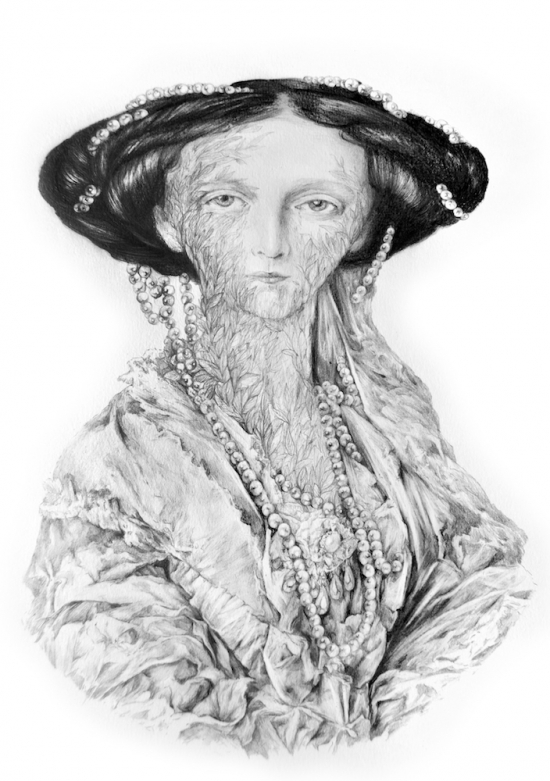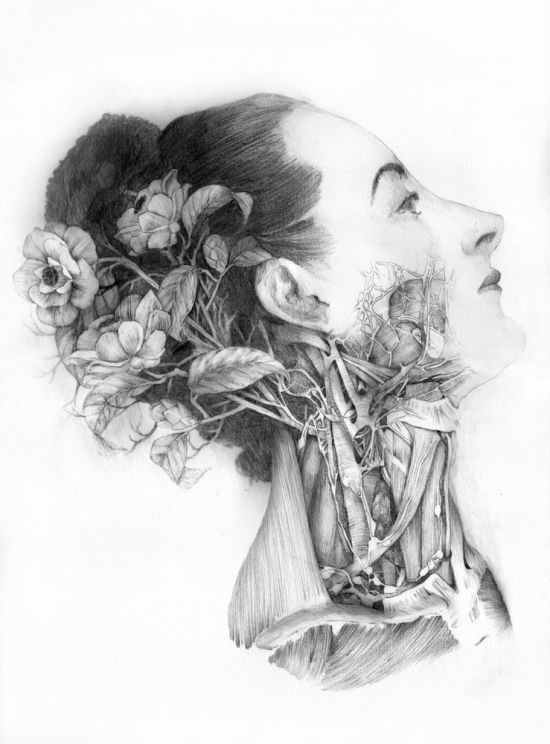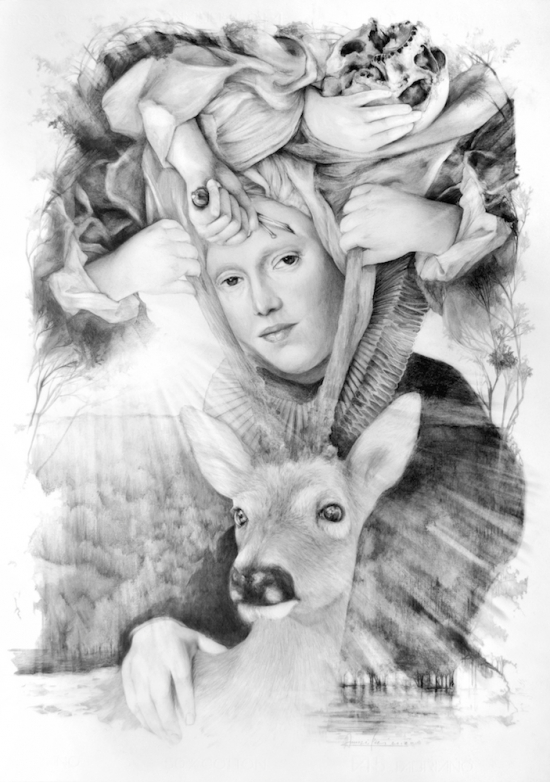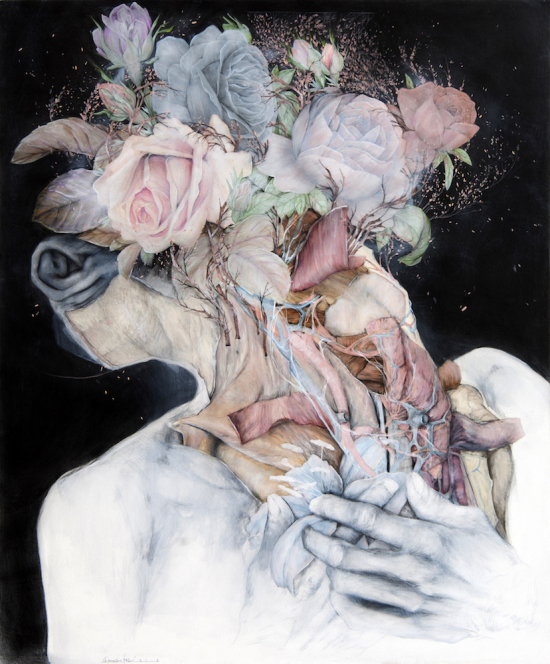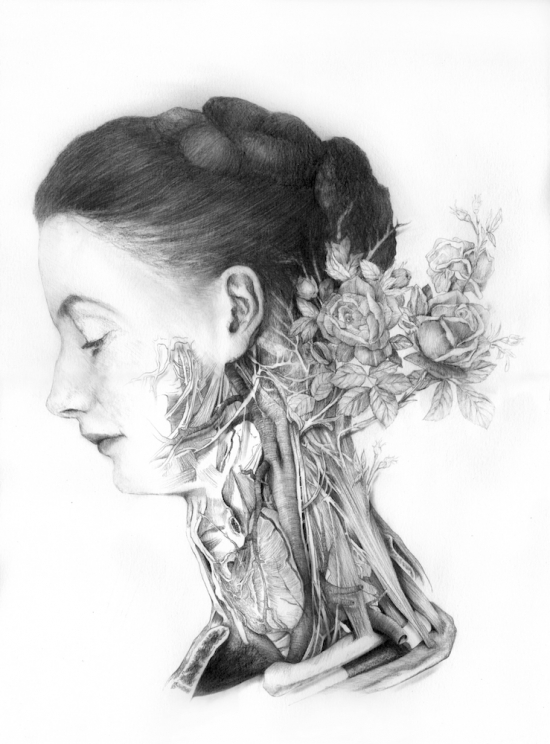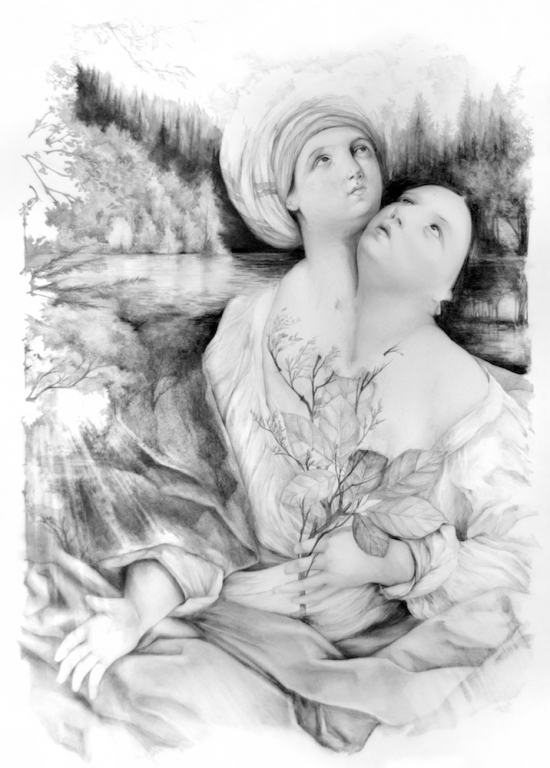NUNZIO PACI
I have always been living in the province of Bologna, in the countryside, and the natural elements you can find in my work, and that I keep drawing over and over, are part of my memory and of my experience. The bond I feel with nature is made of this, of this place… I find it really hard to detach myself from all that is organic, like flowers and woods… and also when I go for long walks—because I like wandering in the woods—and I find pieces of natural materials, it’s unlikely that I leave them where they are. I feel the urge to collect and keep them, even if, occasionally, I get rid of them since I obviously need to make room and clean up, because I am a tidy and pretty methodical person. I collect everything! Two years ago, I was in Norway where I had been invited to an artistic residency, and there it often happened to me to find dead birds too, because there were big windows and the birds in flight often slammed into them… and every time the other fellow artists of the residency found something dead they used to bring it to me! Eventually I had collected a little bit of everything. Well, of course, after some time, they putrefied, but at the same residency I met a taxidermist. I needed to understand how it worked, the idea of preserving a body attracts me… so I worked with him, he taught me some of his secrets and I was able to preserve some of those birds.
I draw from life, and before anatomy I was focused on diseases, it was my artistic research and something I was personally interested in. I wanted to understand diseases in those places where healthcare is influenced by economics, and how they also influence the appearance of people. Many things in my personal and private life have to do with malformation, human nature and disease… but there are also political and social aspects. So, I started to study how these diseases affect organic tissues, I wanted to see the skin become something else… and I tried to think about these diseases in terms of transformation and change, not decay. In my opinion, disease is just a phase of life, and a form of the body. I don’t see it as something bad, it’s just the body changing, it’s a sign that something is evolving. Anyway, all is part of life. I am interested in the disease but I couldn’t tell why. Eventually I made some illustrations but I never exhibited them, because I consider them a mere exercise. Then I switched to human anatomy, I was interested in understanding its mechanisms, the interaction between man and human body, and while progressing and deepening my knowledge I started to feel the urge to tell a story, to make my subjects more autonomous and able to speak for themselves. They are things that happen to me or that I dream of, and I try to make sure that they can express themselves.
When you work with dissected bodies and stuff like that, sensitivity—i.e. romanticism—is fundamental; my intention is not to scandalise or offend other people’s sensibility, I try to find a sort of balance. I think that romanticism is a mere question of balance, which is very important to me. My intention is, indeed, to remain in a dreamlike, surreal dimension, because I don’t want to depict anything realistic. I need to tell real things with a surreal language; to balance the harshness of certain images with floral or simply colourful elements, thus creating a sort of deceit. In some of my works the concept of camouflage is definitely apparent. This happens also in nature, and just like in nature the body of certain animals changes, undergoing a transformation in order to defend themselves or even attack, in my pictures, the floral, romantic, component is a sort of metamorphosis aiming at defending oneself, enduring certain situations or, anyhow, surviving. Why… I don’t know why. I just paint.
I didn’t receive a traditional artistic training: I started attending the Academy but I had to quit and start working.
I am a self-taught, I started to think on my own, trying to understand the mechanisms of this job and to learn how to be able to achieve what I wanted and which was the best way to do it. Having a clear idea of something and being able to achieve it are two very different things, because they involve two different languages. The language of thought is totally abstract and when you have to make something concrete you have to deal with totally different dynamics. I used to paint at night and during the weekends, but now I have no time left for working. I have been a full-time painter for several years now and I feel very lucky. At the beginning, it wasn’t easy, because I am very shy, but it’s all right now, I like the quiet life and focusing on my work. It’s what I’ve always wanted to do and, anyway, it’s the only thing I can do, I have not many skills.
I consider myself an illustrator more than an artist, I illustrate my thoughts, not a story but my reflections. I have always considered myself as a sort of vehicle, an instrument, an extension of the paint brush. I am only the instrument of thought and I create a sort of photography. Painting, just like smells, helps me keep and preserve certain moments.
In La regina delle lacrime (Queen of tears) I wished to create a contrast between the ostentation, the apparent wealth and these leaves sprouting from her chest and generated by her tears. It’s nothing physical, it comes from inside: when we suffer from a psychological malaise our body changes, so not everything we see really exists and vice versa. Society leads us to hide our discomforts, but before long they emerge and our body mirrors our melancholy, our sufferings, malaises, frustrations… What we see in reality never reflects what we really are.
La regina delle lacrime is about all this, a common theme in all my works, a kind of sad book, one of my tales.
Province of Bologna, January 24, 2019
